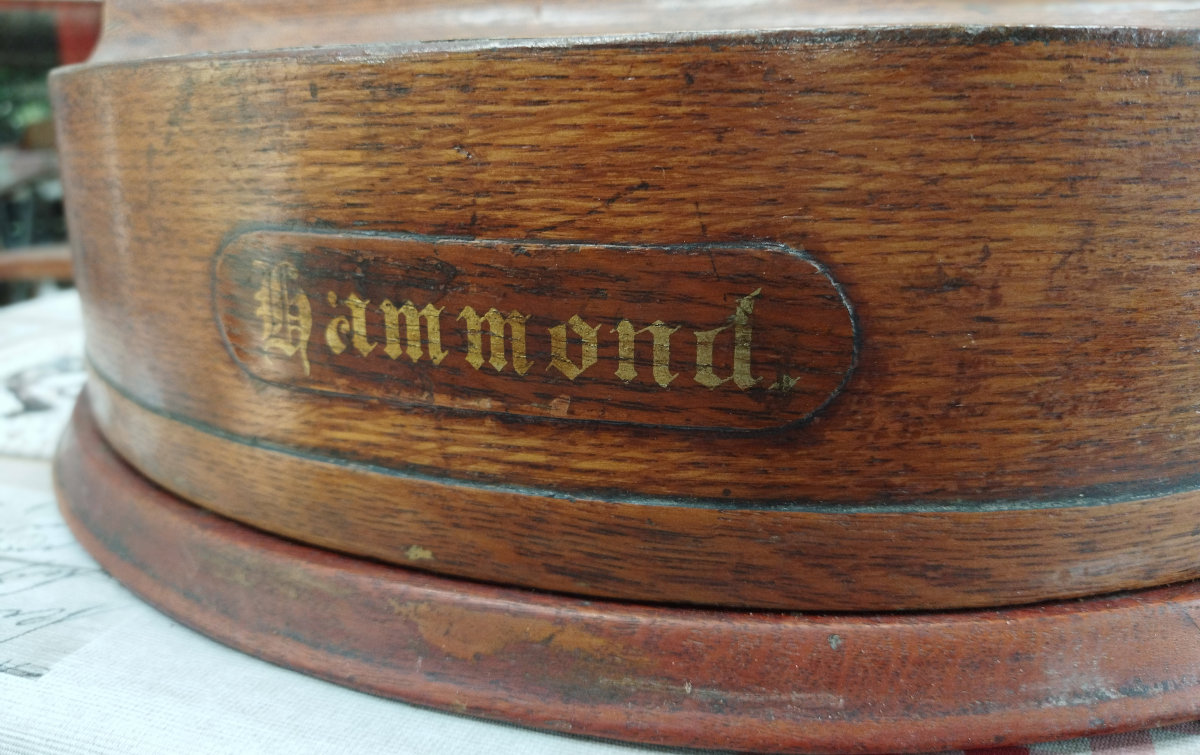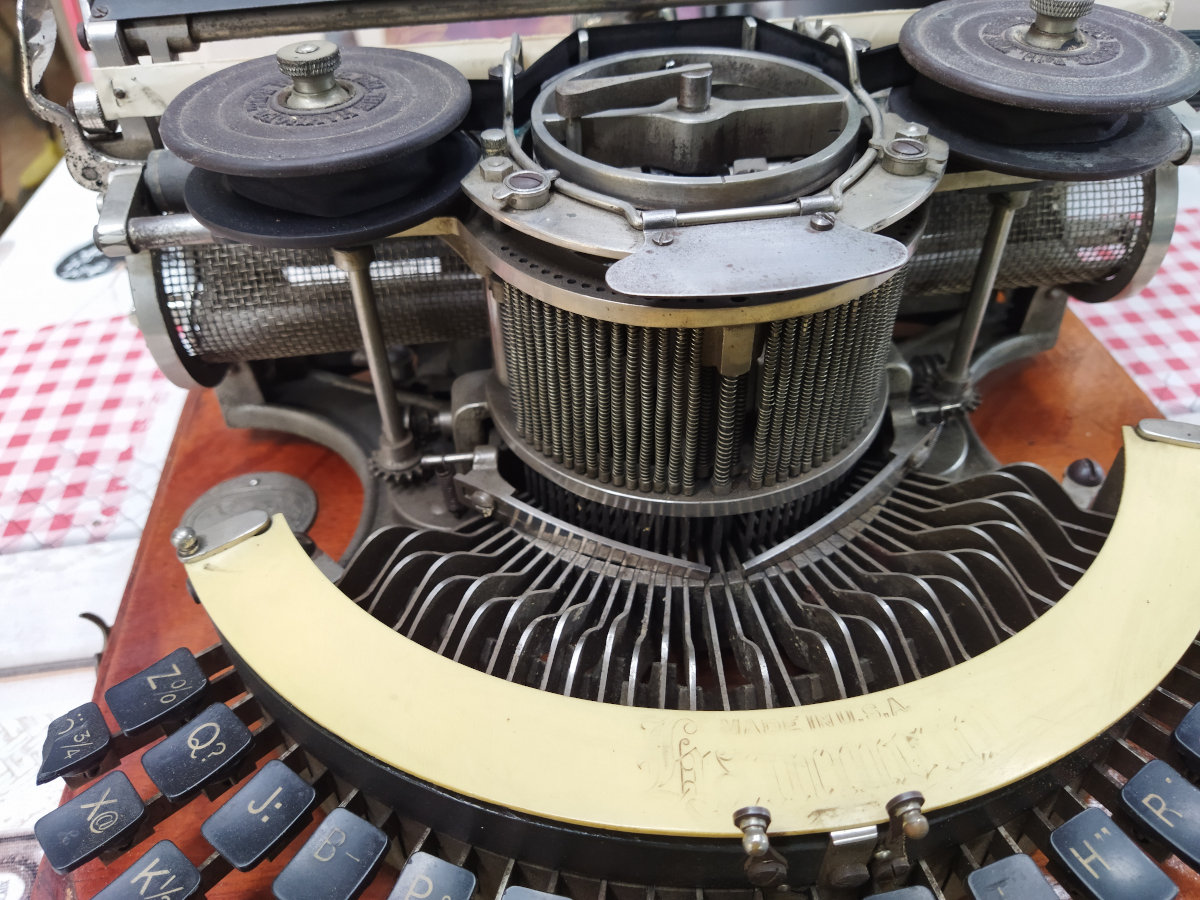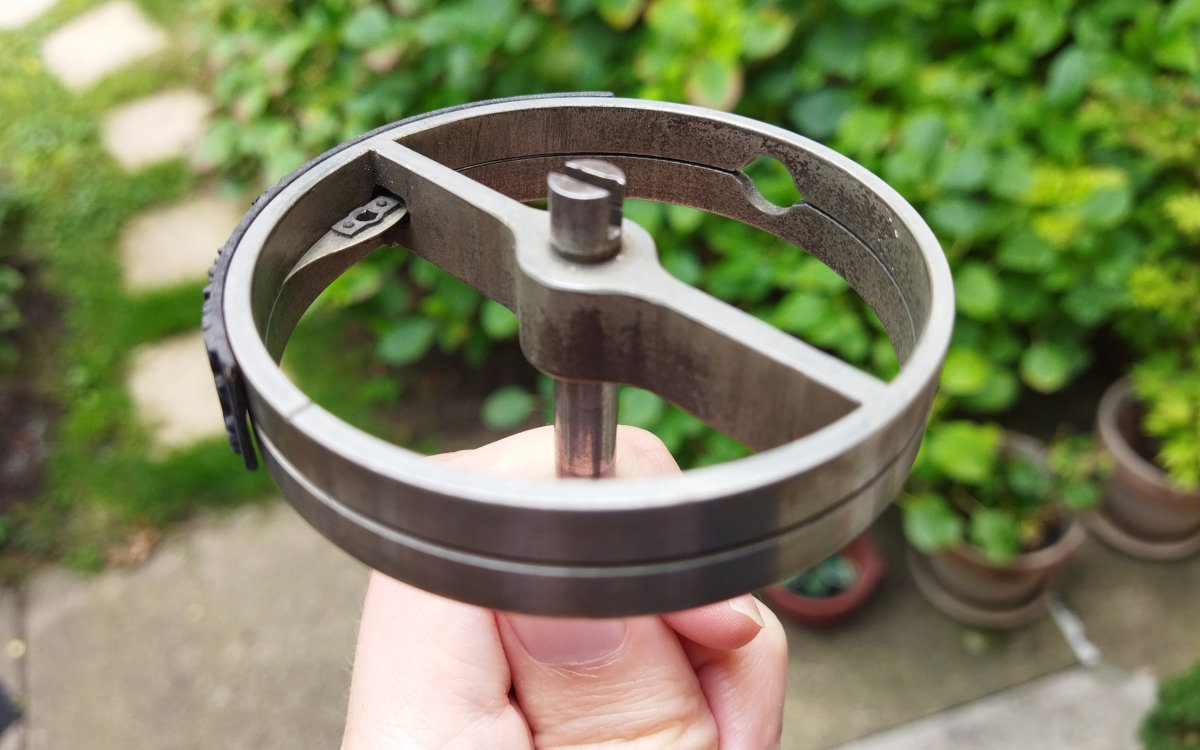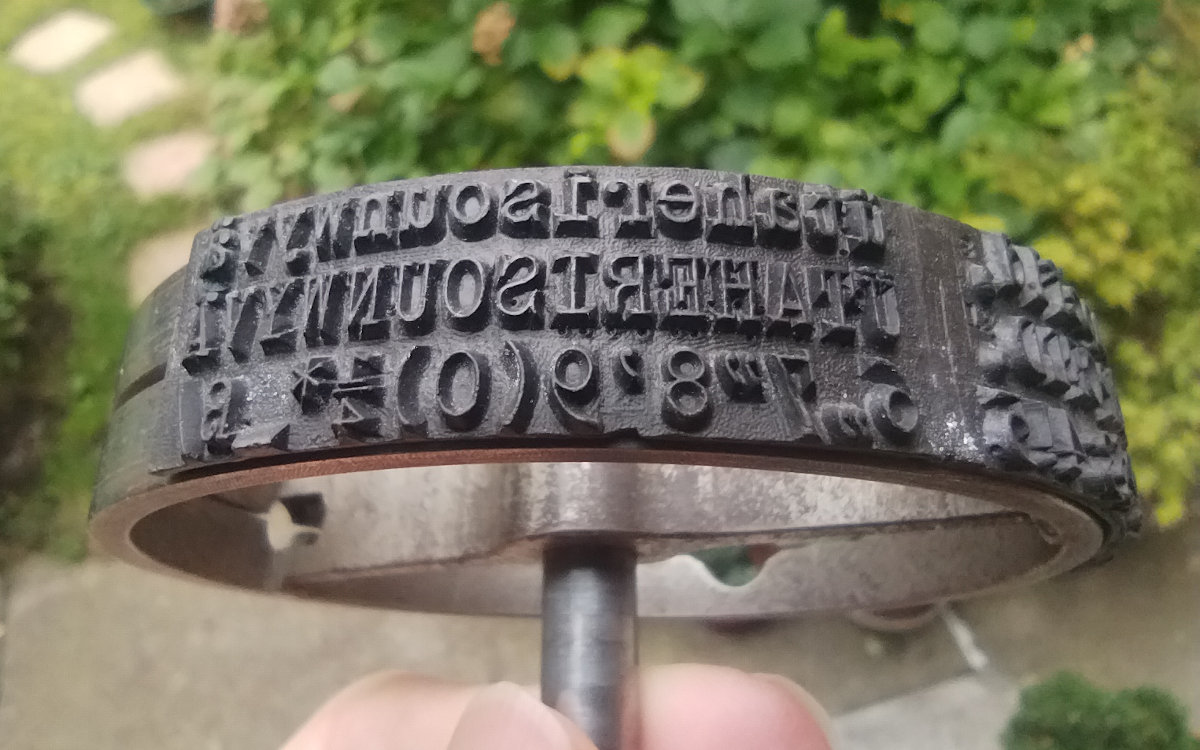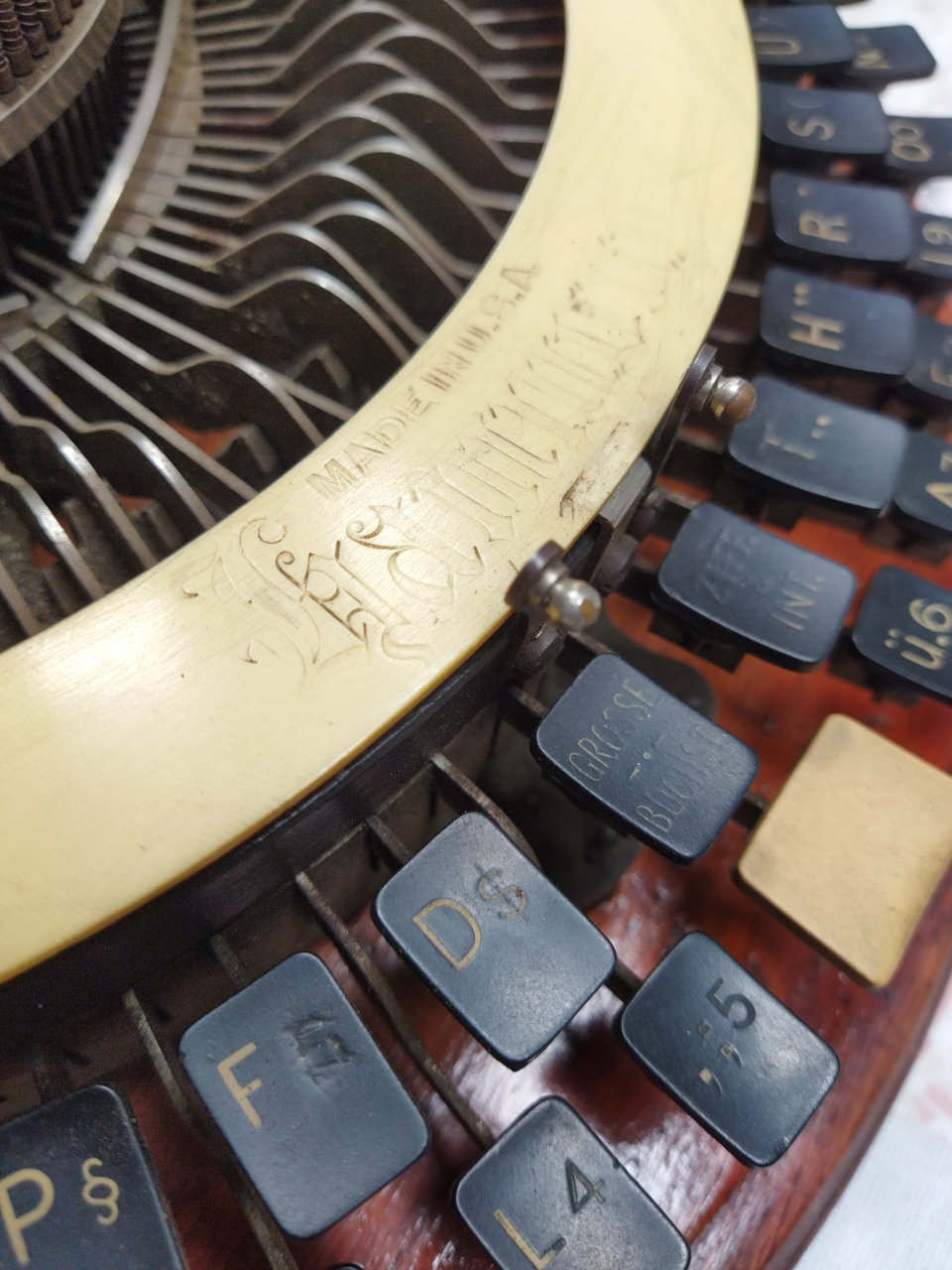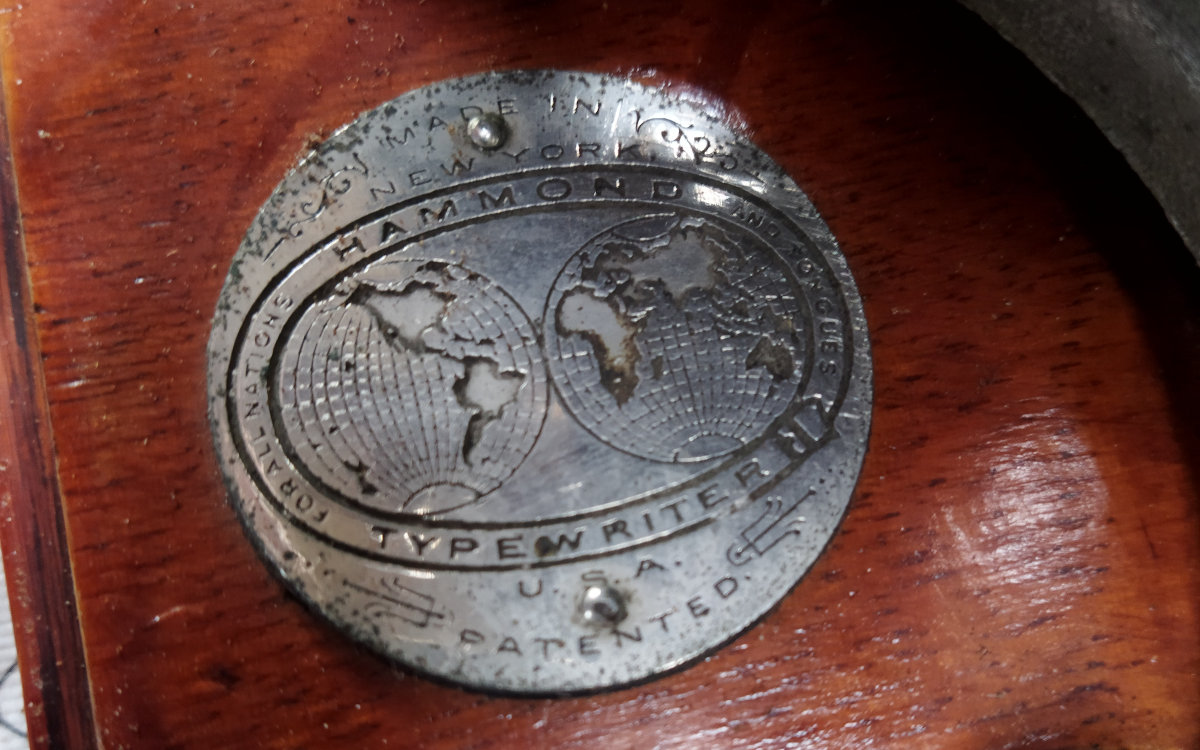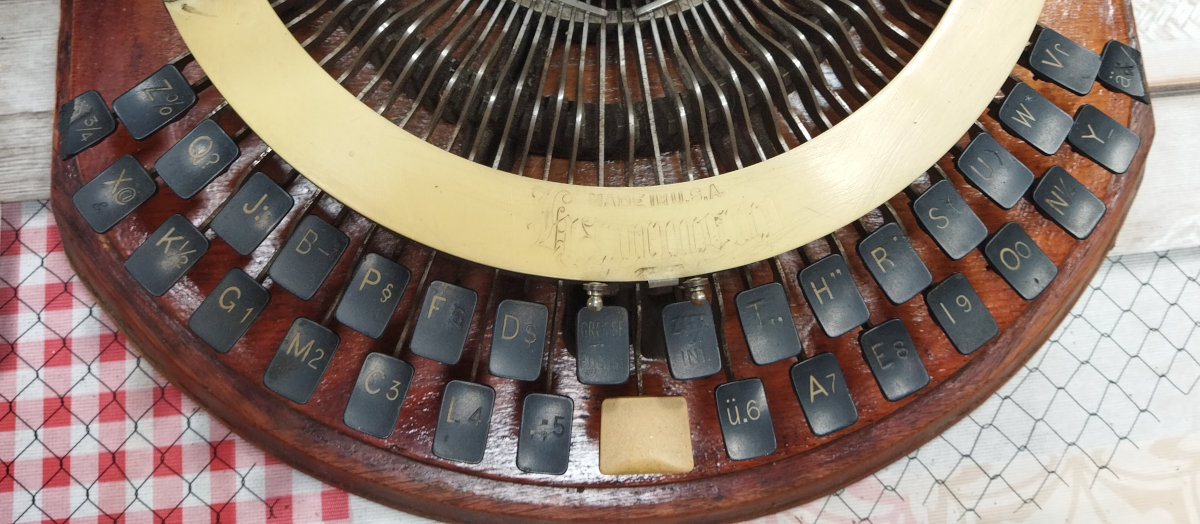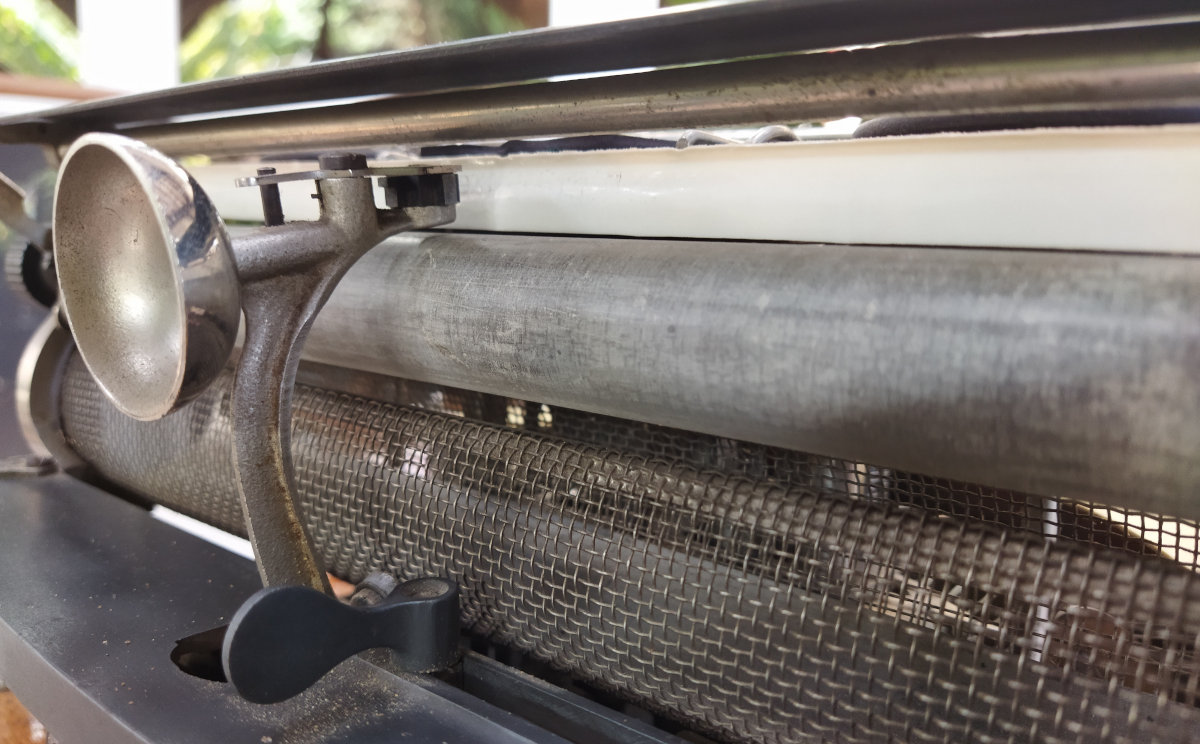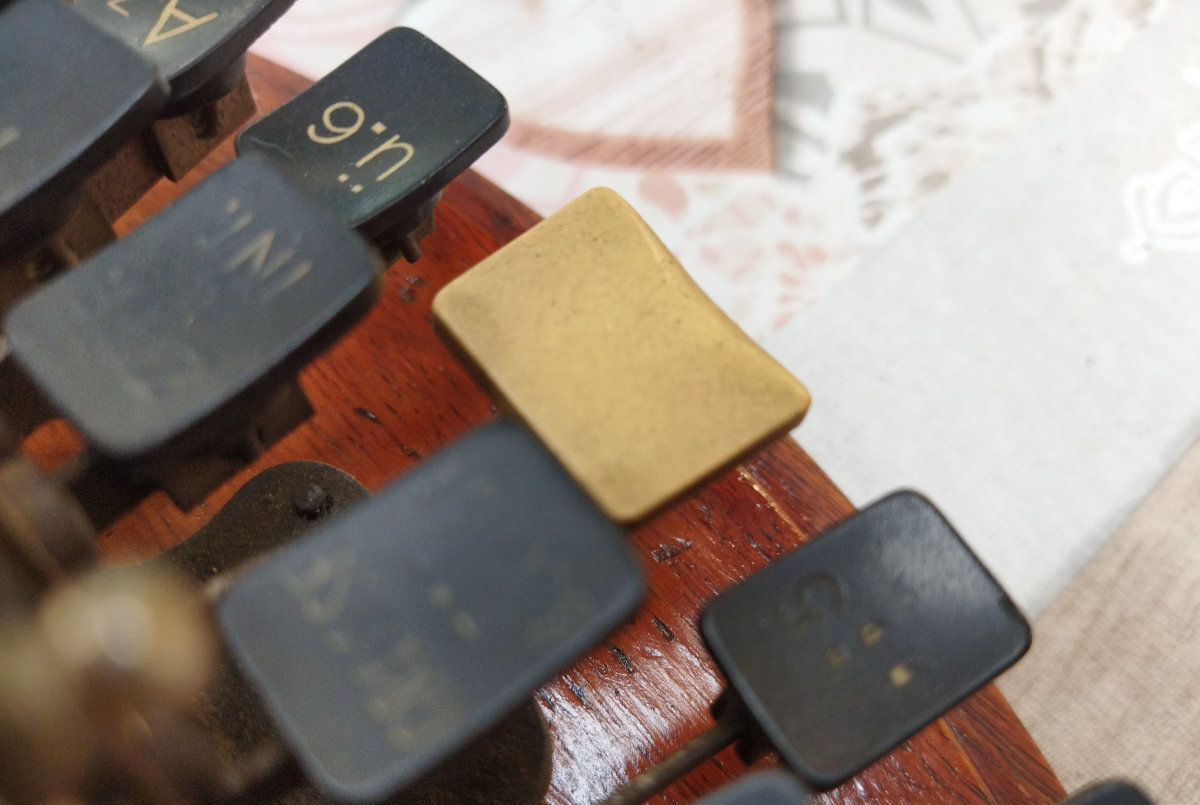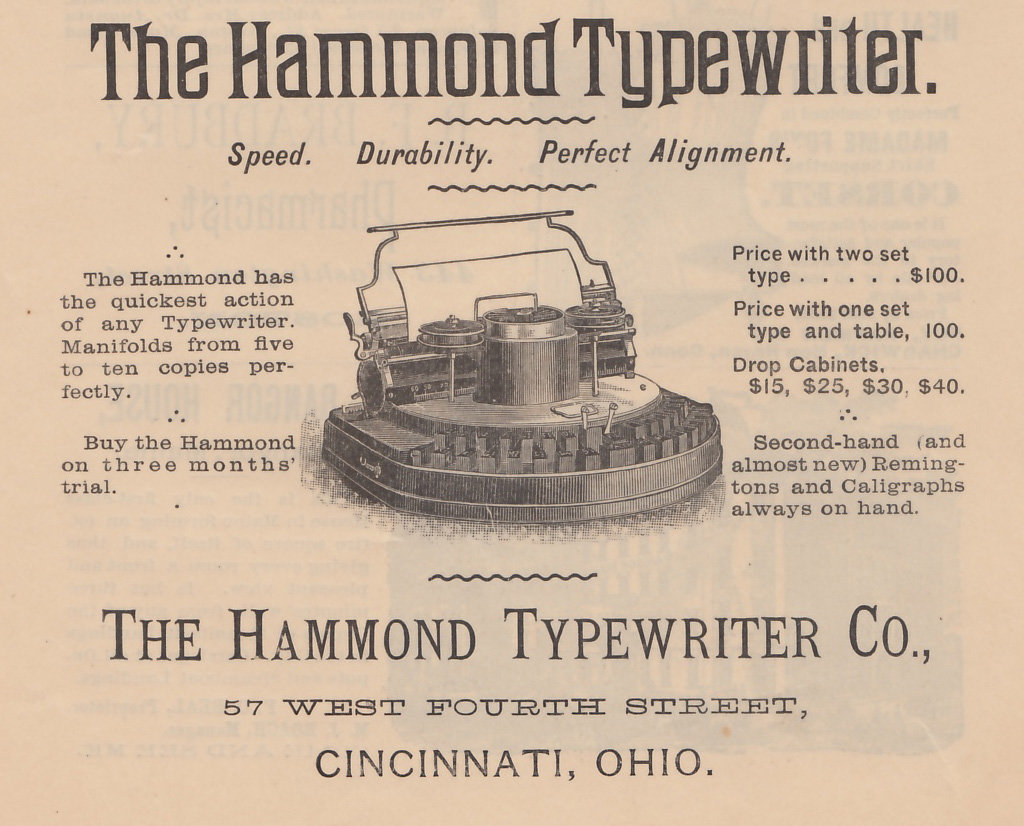Keyboard Builders' Digest / History
Hammond 2 typewriter
My latest acquisition is a specimen of the pretty unique Hammond typewriters which comes with non-QWERTY layout and is packed with ingenious features.
Published October 6, 2023

There was a write-up about Hammonds two years ago, after a fellow redditor posted a photo on r/mk and I delved into this topic. What by the way proved very useful because I remembered these peculiar machines when a real Hammond happened to cross my path in the wild the other day.
The Hammond in the photo above is even older than the No 12 introduced in that first post. I found it at a Hungarian dealer who sourced it in Austria, so this one is a German version. No info about the previous owner (or probably owners, since this was manufactured in the late 1800s).
"In general, the things that come to me all come from inheritance, and unfortunately the story is usually that the person who kept these things can no longer tell about them by the time they change hands" – the seller.
How true and sad at the same time. Note to myself: Make sure to slip a piece of paper into typewriter or even vintage keyboard cases with some details for posterity.
Hammond 2 key features
Hammonds are not your usual typewriters, their mechanism with the distinctive turret, anvil and hammer is entirely dissimilar to all the contemporary contraptions, like e.g. the Remington 2.
- "ideal" layout (marketed in the universal physical layout and QWERTY as well).
- "hotswap" language/typeface replacement
- two shift keys to access capital letters and symbols/numbers.
- powered by a spring: actuated by a much lighter keypress than usual
Hammond 2
The Hammond Typewriter Company was founded in 1880 (New York) by James B. Hammond, a Civil War correspondent/telegraphist. Production started in 1884, and this particular model No. 2 was introduced around 1895. One of the improvements was the anvil and shuttle part, with a one-piece shuttle: an arc of about 118 degrees made of hardened rubber.
On the shuttle, the characters are arranged in three rows, with the symbols and numbers along the bottom row – accessible via two shift keys which raise the anvil on keypress.
The GROSSE BUCHST[ABE] (capital letters) and ZIFF[ERN] & INT[ERNATIONAL?] (numbers and national characters) keys are the two layer-mods, each with a locking mechanism (caps lock and num lock).
Since the vulcanized rubber shuttles were relatively cheap and could be easily replaced, there were plenty of options with various languages, font types, scientific, linguistic sets, or even Braille for visually impaired users. Hammondstypewriter.com mentions 350+ different known variants and lists some shuttle guides too.
Let's take a closer look at the logical layout of my shuttle with the catalogue code 12B - Large Roman (New Orthography):
ZQJBPFD THRSUWV ÖXKGMCL. ÜAEIONYÄ
Since the "ideal" layout doesn't really change across languages except the national characters, I guess it was developed with English in mind. So feel free to apply some English language statistics to the layout (despite the German shuttle) – to generate a mental heatmap. (I may do a graph later and update this post.)
You can recognize some Dvorak and Colemak/Workman patterns, just take a look at the vowels.
As you can see, it's an extremely unbalanced layout with most of the job being done with your right hand. That said, it would be quite difficult to compare this two-row layout to a three-row QWERTY or any other modern layout. And I can't wrap my head around how typing speeds of 170-200 WPM (claimed by ads) could be achieved e.g. with all the frequent letters on the same hand.
Where are the type bars?!
So what happens if you press a key? In contrast to common typewriters you may be familiar with, Hammonds have no typebars which would strike the paper. Instead, when a key is pressed, the shuttle is rotated around the metal ring (anvil). With the shuttle in position, i.e. the character belonging to the pressed key aligned properly, a separate piece of metal (hammer) strikes your sheet of paper from the back – driven by a spiral spring.
Thanks to this spring-based mechanism, you don't have to exert great force to type! Instead, you simply wind up this thing like an old key-wound clock, and it does its job on even a light keypress.
To protect the paper, there's an impression strip running across the typewriter (the white one), so that's what is directly hit by the hammer.
Dating
After some initial confusion I could narrow the manufacturing year of my particular Hammond 2 to somewhere between 1895 and 1902. (In 1902, a new single-piece paper rack was introduced, but mine has the old cast support arms plus rod version.) For a more accurate estimate I reached out to more knowledgeable people, especially Jonathan of hammondtypewriters.com, who confirmed that I was on the right track:
I would date this one fairly early, around 1898. The beautiful nickel plating is original and it has the 3-piece paper rest which were very indicative of that era – Jonathan.
Price
Despite all the Hammond advertisements and ephemera I could find only a single ad where the price was indicated – the Hammond No 1 was offered for $100 in 1887, which would mean $3,200 in today's money.
The end of Hammond
When the eccentric James Hammond died in 1913 – on his self-designed yacht on which he tried to sail around the globe – his testament awarded the rights to the Metropolitan Museum of Art. The patents were sold by the Museum to Frederick Hepburn Company, and a similar typewriter as Hammond was introduced under the name “Varityper”. The company went into bankruptcy in 1933.
Resources
- https://imgur.com/a/P1gGbDF
- https://hammondtypewriter.com
- https://typewriterdatabase.com/hammond.8.typewriter-serial-number-database
- https://en.wikipedia.org/wiki/James_B._Hammond
- https://typewriter.slk.fi/typewriter-collection/hammond/
- https://patents.google.com/patent/US825966A/en?inventor=James+B+Hammond
- https://patents.google.com/patent/US1041071
- https://www.newspapers.com/article/47371505/james-b-hammond-dies-while-yachting/
Published on Fri 6th Oct 2023. Featured in KBD #138.

